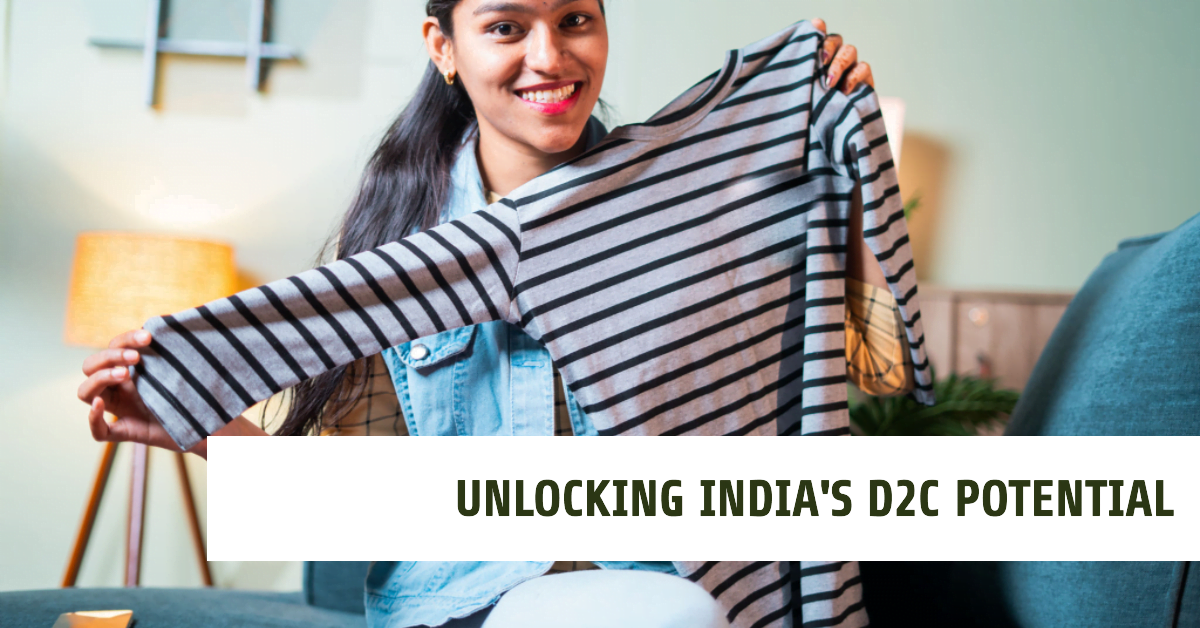While surfing the internet on what’s new in D2C, I came across this slightly older article but still relevant today from Salesforce and then read through a few another similar articles. Here is a summary of my learning from the day on this topic.
The rise of Direct-to-Consumer or D2C brands has transformed the way businesses engage, market, and sell their products to consumers. In India, the D2C sector has witnessed significant growth, with over 600 brands launched since 2016. With the market size projected to reach $100 billion by 2025, it’s crucial for D2C brands, founders, and professionals in India to understand the trends and practical steps required to succeed in this dynamic landscape. In this article, we will explore the driving forces behind India’s D2C boom and provide practical advice for implementing successful strategies.
Understanding India’s D2C Boom:
India’s D2C revolution can be attributed to several key factors:
Evolving consumer types:
D2C brands have successfully tapped into the needs of Indian consumers, particularly women who are increasingly shopping online. By identifying consumer preferences and addressing product and price gaps left by traditional retailers, D2C brands have emerged as industry disruptors.
Shift towards convenience and customization:
Indian consumers seek instant gratification, convenience, and personalized products across various categories. D2C brands have capitalized on this demand by establishing direct relationships with consumers, offering niche or customized products, and leveraging e-commerce and social media platforms.
Favorable market conditions:
The availability of affordable internet data, growing e-commerce adoption, and the rise of social media consumption have created a conducive environment for D2C brands to thrive. Additionally, a robust infrastructure for payments, logistics, warehousing, and delivery has facilitated their operations.
Key Differentiators for D2C Brands:
D2C brands stand out from traditional brands by adopting the following strategies:
Need identification:
Successful D2C companies possess a deep understanding of market needs, trends, and consumer feedback. By identifying gaps and offering innovative solutions, they disrupt established industries. For instance, Wakefit revolutionized India’s sleep industry with affordable ergonomic mattresses.
Innovative marketing:
D2C brands leverage digital marketing, social media influencers, and storytelling to establish meaningful connections with consumers. The Mom’s Co., for example, effectively utilized social media influencer networks to communicate its brand purpose and key messages.
Content, commerce, and community:
D2C brands combine content-driven marketing, consumer feedback, and social affirmations to strengthen their reach and word-of-mouth marketing. Good Glamm Group, a portfolio of beauty and personal care brands, leads the content-driven commerce revolution while building a strong network of consumers across categories.
Agile value chain:
D2C brands utilize first-party data to forecast demand, manage inventories, and optimize supply chains. Integration across the value chain enables operational efficiencies. FabAlley, with its own manufacturing facilities, expedited workflows from design to shelf.
Tech-led shopping experiences:
D2C brands enhance customer experiences through technologies like AR-VR enabled virtual trials and consultations. They also focus on validating product authenticity and transparency, catering to the sustainability concerns of Millennial and Gen Z consumers.
Practical Steps for Success in D2C:
If you are a D2C brand, founder, or professional aiming to tap into India’s D2C marketing opportunity, consider the following steps:
Define the role of your D2C channel:
Determine whether your D2C channel will primarily focus on driving sales, capturing consumer insights, differentiating your brand, or a combination of these factors. Clearly identifying its purpose will help you develop targeted and profitable strategies.
Evaluate product-market fit:
Understand the problem your brand addresses, the solution it offers, and the scalability potential. Analyze the underlying unit economics and assess if a viable D2C business case exists.
Establish brand purpose and target audience:
Clearly define your brand’s values, communication, and promises. Identify the specific consumer segments your brand will cater to and build social proof for your entry into the D2C space.
Determine your category play:
Assess whether you are venturing into a highly competitive category already served by marketplaces or addressing untapped customer needs. This analysis will help outline your addressable market, margins, and potential for growth.
Optimize your product mix and pricing:
Strike a balance between revenue potential, operational feasibility, and consumer benefits. Consider bundling options, exclusivity, and perks to justify premium pricing.
Streamline tech integrations:
Seamlessly integrate your D2C channels with third-party payment and delivery systems, CRM support, and marketing automation tools. This ensures smooth customer experiences and effective conversions across multiple channels.
Develop a comprehensive D2C marketing funnel:
Continuously iterate and test your marketing tactics. Engage shoppers throughout their journey with compelling visuals, pop-ups, videos, and content. Leverage social media to build interest and trust, and provide opportunities for consumers to evaluate your products.
Consider partnership costs:
Account for delivery models and packaging costs based on your product portfolio. Evaluate partnerships that can enhance your brand visibility and reach.
“The future of D2C lies in omni-channel strategies, where brands integrate online and offline channels for enhanced visibility and reach.”
The Future of D2C:
D2C is not just a sales channel but a transformative way to understand and connect with consumers. As the D2C sector continues to mature, success factors will vary by category, and brands will explore online-only or multi-channel distribution strategies. Additionally, many D2C brands may expand into offline retail to further enhance their brand visibility and reach. This omni-channel approach requires investments in talent and digitizing in-store experiences.
Table: Key Factors and Strategies for D2C Success in India
| Factors and Strategies | Description |
|---|---|
| Need identification | D2C companies understand industry trends and consumer needs, leading to disruptive innovations. |
| Innovative marketing | D2C brands establish meaningful connections through digital marketing and leverage social media influencers. |
| Content, commerce, community | D2C brands combine content-driven marketing, consumer feedback, and social affirmations to strengthen reach. |
| Agile value chain | D2C brands leverage first-party data for demand forecasting and operational efficiencies across the value chain. |
| Tech-led shopping experiences | D2C brands enhance customer experiences through technologies like AR-VR trials and emphasize product authenticity. |
Conclusion:
In a rapidly evolving marketplace, D2C brands, founders, and professionals in India have a significant opportunity to capitalize on the $100 billion D2C marketing opportunity. By understanding the driving forces behind India’s D2C boom and implementing practical strategies outlined in this article, they can unlock new growth avenues, establish direct consumer relationships, and gain a competitive edge. With the right approach, D2C can become a powerful weapon in the battle for consumer relationships.
Sources: Direct to a Billion Consumers – Unlocking India’s $100 Billion D2C Marketing Opportunity by Salesforce
YOU MAY ALSO LIKE:
> What Role Does Packaging Play in Creating a Distinctive D2C Brand Identity?
> India’s Most Valuable Brands of 2023: Driving Economic Growth and Value Creation

